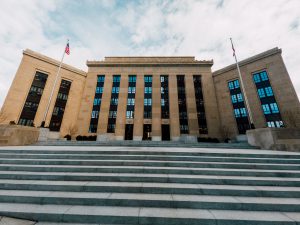This week in a nutshell (19th September- 23rd September)

Technical talks
NIFTY opened the week on 19th September at 17,540 and closed on 23rd September at 17,327. The index lost 1.2% during the week. The index has managed to sustain above the 50DMA of 17,327 level, which is acting as a support. On the upside, the recent high of 18,114 might act as a resistance.
Among the sectoral indices, FMCG (+3.9%), PHARMA (+2.1%), and AUTO (+1.1%) were the top gainers while REALTY (-3.9%), PSU BANK (-3.1%), BANK (-3.0%) were the losers in the week.
Weekly highlights
- Wall Street indices were volatile and reacted to because of the Fed’s interest rate decision on 21st September. Nasdaq and S&P ended 1.6% and 1.7% lower respectively.
- Oil prices during the week reacted to supply concerns ahead of the European Union embargo on Russian oil which offset fears of a global recession that could dampen fuel demand, stalled Iran nuclear agreement, and Fed interest rate hike. Brent oil futures and WTI futures ended lower wherein the former settled at USD 85/ barrel and the latter 5% lower at USD 79/barrel.
- The Federal Reserve raised its key interest rate by 0.75% on Wednesday, bringing the target range to between 3% and 3.25%. According to the Fed’s forecasts, interest rates will reach 4.4% by FY23E.
- On September 22nd, the Bank of England raised its key interest rate by 0.5% to 2.25% from 1.75%, which is its biggest rate hike in 27 years.
- According to a circular issued by the Ministry of Finance on September 16, the government of India reduced the windfall tax on locally produced crude oil to Rs 10,500 from Rs 13,000 per tonne, easing the burden on consumers.
- The RBI is depleting its foreign exchange reserves at a faster rate than during the taper-tantrum period in 2013, in order to prevent the rupee from overshooting. The country’s foreign exchange reserves fell by USD 2.2 bn for the week ended September 9 to USD 550.8 bn due to a drop in foreign currency assets (FCAs), a major component of overall reserves. Between January and July 2022, the RBI sold a net of USD 38.8 bn from its forex reserves. In July alone, a net of USD 19 bn was sold, and intervention remained intense in August when the rupee fell below 80 against the dollar.
- The Asian Development Bank cut its growth forecasts for Asia, which includes India and China, for 2022 and 2023 on September 21 due to mounting risks from increased monetary tightening, the fallout from Ukraine’s war, and Covid-19 lockdowns in China. The ADB forecasts a 4.9% growth in the region’s economy in 2023.
- On September 20, Yes Bank announced that its board of directors had approved the sale of USD 6 bn (approximately Rs 480 bn) in stressed debt to private equity firm JC Flowers after the bank received no challenger bids to JC Flowers’ base bid for the Rs 48,000 crore NPA portfolio.
- FII (Foreign Institutional Investors) turned net sellers this week, selling shares worth Rs 43,620 mn. DII (Domestic Institutional Investors) were net buyers, buying shares worth Rs 11,380 mn.
Things to watch out for next week
- Fed’s 75 basis point rate hike is expected to have a ripple effect which will weigh on MPC’s monetary agenda when it meets on 28th September. Investors will be looking forward to the comments from RBI regarding inflation and interest rate hikes.
- Various economic data points are set to be released next week starting from Japan’s PMI and policy meet, China’s industrial profits and manufacturing PMI, US 2QFY22 GDP data, and jobless claims for the week.
Disclaimer: “The views expressed are for information purposes only. The information provided herein should not be considered investment advice or research recommendation. The users should rely on their own research and analysis and should consult their own investment advisors to determine the merit, risks, and suitability of the information provided.”
